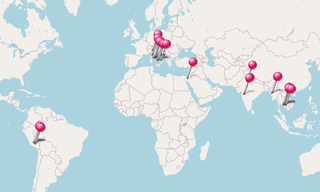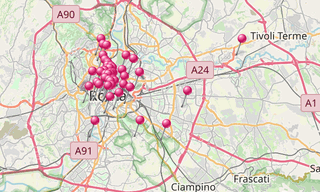The Theatre of Marcellus is an ancient open-air theatre in Rome, built in the closing years of the Roman Republic. At the theatre, locals and visitors alike were able to watch performances of drama and song. It was named after Marcus Marcellus, Emperor Augustus’s nephew, who died five years before its completion.
Space for the theatre was cleared by Julius Caesar, who was murdered before it could be begun; the theatre was so far advanced by 17 BC that part of the celebration of the ludi saeculares took place within the theatre; it was completed in 13 BC and formally inaugurated in 12 BC by Augustus.
The theatre was 111 m in diameter; it could originally hold 11,000 spectators. It was an impressive example of what was to become one of the most pervasive urban architectural forms of the Roman world.
The theatre was built mainly of tuff, and concrete faced with stones in the pattern known as opus reticulatum, completely sheathed in white travertine. The network of arches, corridors, tunnels and ramps that gave access to the interiors of such Roman theatres were normally ornamented with a screen of engaged columns in Greek orders: Doric at the base, Ionic in the middle.
It is believed that Corinthian columns were used for the upper level but this is uncertain as the theatre was reconstructed in the Middle Ages, removing the top tier of seating and the columns. The name Templum Marcelli still clung to the ruins in 998. In the Early Middle Ages the Teatro di Marcello was used as a fortress of the Fabii and then at the end of the 11th century, by Pier Leoni and later his heirs (the Pierleoni).
The Savelli held it in the 13th century. Later, in the 16th century, the residence of the Orsini, designed by Baldassare Peruzzi, was built atop the ruins of the ancient theatre.

.hero.landscape.jpg?w=1600)

.jpg?w=256)
.jpg?w=256)
.jpg?w=256)
.jpg?w=256)
.jpg?w=256)
.jpg?w=256)
.jpg?w=256)
.jpg?w=256)
.jpg?w=256)
.jpg?w=256)
.hero.jpg?w=320)

.hero.jpg?w=320)

.hero.jpg?w=320)
